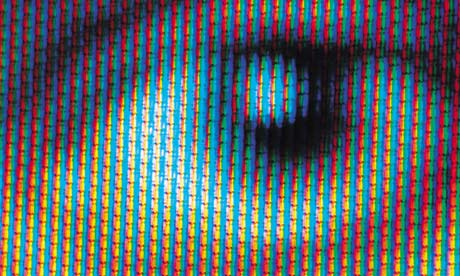 |
| http://vignette1.wikia.nocookie.net/dcanimated/images/a/a2/Hatter_Examines.jpg/revision/latest?cb=20150519020114 |
Nanotechnology has never been something I regularly thought about, it seemed to me to always be something in science fiction movies and comic books. Through the lectures and readings I realized that nanotechnology not only is an emerging area of science but it is not too far off of what I have seen in old cartoons (conceptually). Nanotechnology takes place on such an small scale that we can seldom seem to understand it. Unlike the nanotechnology that brainiac used to take control of Batman's mind in Superman the animated series which was a much exaggerated use of the technology, the technology happens on a very similar scale. Some of the applications discussed by Gimzewski was wearable nanotechnology that could monitor someones bodily functions and be able to accurately detect any problems or changes.
 |
| https://static-secure.guim.co.uk/sys-images/Guardian/Pix/pictures/2013/3/14/1363273560086/macro-close-up-on-an-eye--008.jpg |
There are many applications of nanotechnology in our modern society that we do not realize. Personally I spend many of my younger year plopped in front of a television. This is a prime example of where art and nanotechnology can work together harmoniously. Pictures on a television are composed of thousands of tiny dots that each show a singular color, these colors together compose a picture in which people can see the shows and movies they want from anywhere. These little dots of color are called quantum dots.
The same technology is applied on our phone screens which have become such an integral part of our lives. The screen technology combined with the sensitivity to touch is another example of using art and nanotechnology together harmoniously. People use this technology to make easily accessible apps and information.
 |
| http://searchengineland.com/figz/wp-content/seloads/2015/07/apps-mobile-smartphone-ss-1920-800x450.jpg |
Resources:
Gimzewski, Jim, and Victoria Vesna. "The Nanomeme Syndrome: Blurring of fact & fiction in the construction of a new science." N.p.: n.p., n.d. Print.
Edwards, Clare. "Advantages & Disadvantages of Nanotechnology." Small Business. Demand Media. Web. 23 May 2016. <http://smallbusiness.chron.com/advantages-disadvantages-nanotechnology-37398.html>.
Fehr, Ralph, P.E. "The Basics of Series Circuits." The Basics of Series Circuits. Electrical Construction and Maintenance, 1 May 2003. Web. 23 May 2016. <http://ecmweb.com/basics/basics-series-circuits>.
Uconlineprogram. "Nanotech Jim Pt4." YouTube. YouTube, 21 May 2012. Web. 19 May 2016. <https://www.youtube.com/watch?v=yHCuZetAIhk>.
Uconlineprogram. "Nanotech Jim Pt6." YouTube. YouTube, 21 May 2012. Web. 19 May 2016. <https://www.youtube.com/watch?v=oKlViSKkPd0>.
"What Is Nanotechnology?" Nano. Web. 23 May 2016. <http://www.nano.gov/nanotech-101/what/definition>.











